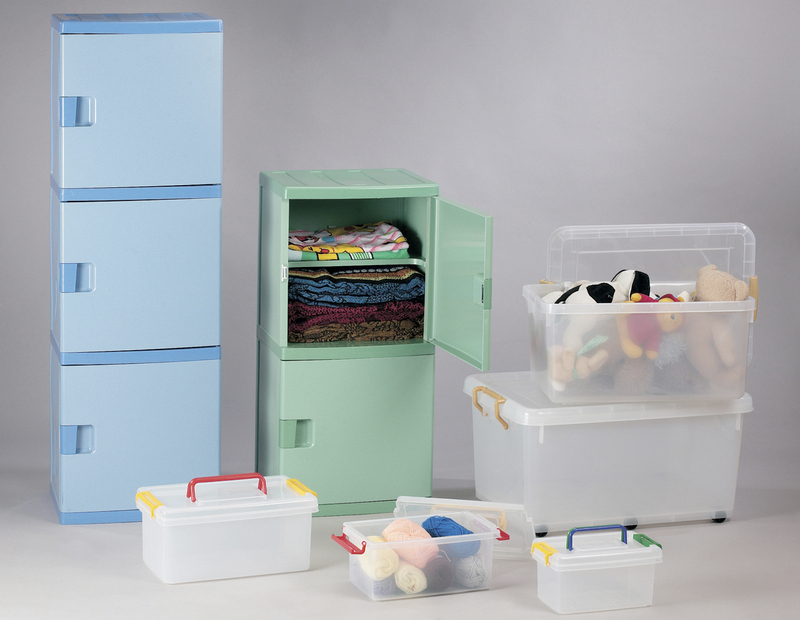Defend Your Recliner: Expert Insights for Long-Term Storage
Posted on 17/05/2025
Defend Your Recliner: Expert Insights for Long-Term Storage
Whether you're downsizing, in the midst of a home renovation, or simply need to put your cherished seating away for an extended period, protecting your recliner during long-term storage should be a top priority. Recliners are often major investments, both financially and emotionally. However, placing your favorite chair in storage without the right precautions can quickly lead to damage from dust, humidity, pests, and even improper handling.
In this comprehensive article, we'll share top expert tips for long-term recliner storage, ensuring your furniture remains comfortable, clean, and ready for use when you retrieve it. Using advice from furniture preservation specialists, we'll address every aspect of recliner storage--from preparation and packing, to climate control, and the ideal ways to prevent common storage-related issues.

Why Proper Recliner Storage Matters
Your recliner offers far more than just a spot to unwind. Over time, it can become an irreplaceable part of your living space--offering ergonomic support, cherished family memories, and personal comfort. When improperly stored, however, recliners can easily fall prey to:
- Mildew and Mold: Moisture promotes the growth of bacteria, leaving unsightly stains and unpleasant odors.
- Pest Infestation: Rodents and insects love dark, undisturbed upholstery for nesting and feeding.
- Fabric Fading and Damage: Direct sunlight, dust, and frequent handling can weaken, fade, or permanently stain the material.
- Mechanical Malfunctions: The moving parts and reclining mechanism can rust, jam, or break without proper attention.
When you defend your recliner through expert storage solutions, you're not only protecting your investment--you're ensuring years of comfort and functionality to come.
Preparing Your Recliner for Long-Term Storage
1. Start with a Thorough Cleaning
Before you even think about moving your recliner into storage, give it a meticulous cleaning. This first step is essential for defending your recliner from pests, mold, and dirt accumulation. Follow these cleaning tips:
- Vacuum Upholstery: Use a brush attachment to extract dust, crumbs, and debris from every crevice and surface.
- Spot-Clean Stains: Reference your manufacturer's care instructions for the best cleaning solution--mild soap and water typically suffice for fabrics. For leather, use a designated leather cleaner and conditioner.
- Dry Thoroughly: Allow all cleaned surfaces to dry completely to prevent trapping moisture (which can lead to mold or mildew during storage).
Expert tip: If your recliner has any lingering odors, sprinkle baking soda over the fabric, let it sit for 20-30 minutes, and then vacuum it up for a fresh finish.
2. Dismantle When Possible
Many modern recliners feature detachable backs or removable footrests, making them easier to transport and store. Check your owner's manual for specific dismantling instructions. Disassembling your recliner:
- Reduces the risk of parts bending or breaking during storage
- Makes it easier to wrap and cover individual sections
- Enables better use of storage space
Be sure to place all screws, bolts, or small components in a labeled bag attached to the recliner frame or stored in an accessible spot--you'll thank yourself later!
3. Choose the Right Protective Materials
Proper wrapping and covering are crucial for defending your recliner against dust, pests, and scratches. Expert furniture movers recommend the following:
- Furniture blankets or soft moving pads – These cushion the recliner from bumps, abrasions, and sharp edges during transport and storage.
- Stretch wrap or plastic sheeting – Ideal for shielding from dust and moisture, but never seal directly against leather or fabric, as it can trap humidity and cause damage.
- Breathable fabric covers – Specially designed covers promote air flow, minimizing the chance of condensation and mold growth.
Pro tip: Never use thick plastic tarps alone for long-term covering; they restrict airflow and foster moisture build-up. Instead, defend your recliner with a combination of blankets and breathable covers.
Choosing the Ideal Storage Environment
1. Opt for a Climate-Controlled Facility
If possible, always store your recliner in a climate-controlled self-storage unit. Temperature and humidity fluctuations are the top culprits behind warped, cracked, or mildewed furniture. A controlled environment keeps your recliner:
- Safe from extreme cold or heat (which can dry out leather and cause warping)
- Protected against mold, mildew, and pest infestations
- Maintained in a dust-free and clean atmosphere
While outdoor or garage storage may seem convenient, these environments expose your valuable recliner to unnecessary risks. Defend your recliner by investing in the right storage solution.
2. Ensure Proper Ventilation and Elevation
You can further defend your recliner over the long term by promoting good airflow within your storage unit. Arrange furniture a few inches from walls to allow circulation behind and below. Elevate your recliner on wooden pallets or sturdy blocks to keep it off the ground--this not only prevents direct contact with potentially damp floors, but also discourages pests from nesting underneath.
3. Avoid Stacking Heavy Items on Your Recliner
It can be tempting to stack lighter boxes or items atop your chair to save space; however, this is a risky move. Extended pressure can:
- Compress cushions and padding beyond repair
- Cause permanent indentations or tears in the fabric or leather
- Damage internal reclining mechanisms or footrests
Your recliner should always stand alone, with nothing stacked above or pressing against it for the duration of storage.
Pest Prevention: Keep Your Recliner Safe from Invaders
1. Inspect and Seal Before Storage
Carefully inspect your recliner for any hidden crumbs, food particles, or organic debris that could attract pests. Use a vacuum crevice tool and thoroughly check under seat cushions, in seams, and in the footrest area. Take extra care if your recliner is going into a public storage space--rodents and insects are drawn to popular furniture storage locations. Expert insight: Sprinkle a little diatomaceous earth around the perimeter of your furniture to act as a safe, natural pest deterrent.
2. Use Sealed Containers for Accessories
If your recliner comes with pillows, blankets, or covers, store them in airtight plastic containers or vacuum-sealed bags. Not only does this prevent pest infestation, but it also keeps textiles smelling fresh and free of dust.
3. Maintain and Monitor
For long-term recliner protection, check your storage unit every few months, if possible. Look for droppings, chewed materials, or evidence of pest presence. The earlier you detect a problem, the easier it is to remediate and defend your recliner from lasting harm.
Protecting Recliner Mechanisms and Moving Parts
One of the defining features of recliners is their complex array of mechanical parts--levers, springs, tracks, and sometimes even integrated electronics. These components require extra attention for long-term storage. Here's how to keep them in optimal condition:
1. Lubricate Metal Components
After thorough cleaning, apply a light coat of manufacturer-recommended lubricant (such as silicone spray or white lithium grease) to all exposed metal parts. This step:
- Prevents rust and corrosion during prolonged disuse
- Ensures smooth, squeak-free operation when you retrieve your recliner
- Reduces the risk of seized or stuck mechanisms
2. Remove or Protect Electrical Components
If your recliner features built-in massage motors, heating units, or USB chargers, follow these steps:
- Unplug and detach all cords and external accessories
- Wrap electrical components in bubble wrap or soft cotton for extra cushioning
- Store wires and remotes in a labeled bag alongside the recliner
Consult your recliner's manufacturer if you're unsure how to disconnect or protect any electrical features.
3. Secure Moving Parts
Ensure that the footrest, backrest, and headrest are in their default, closed positions to reduce strain on the mechanisms. Use sturdy straps or twine (never tape against upholstery) to gently immobilize any parts that could move or swing open accidentally during transit or storage.
Expert Tips for Retrieving Your Recliner from Storage
When it's finally time to reclaim your beloved chair, take these steps to revive and defend your recliner for years of continued comfort:
- Unwrap with Care: Remove blankets and covers gently to avoid snagging fabric or scratching leather.
- Inspect for Mold, Pests, or Damage: Look for any warning signs before returning the chair to your living space.
- Clean and Freshen: Vacuum surfaces and consider airing the recliner outdoors on a dry, breezy day. For leather, reapply conditioner.
- Test All Mechanisms: Gently operate the recliner and address any squeaks or stiffness with added lubrication as required.
- Reassemble Carefully: If you disassembled your recliner, follow the manufacturer's instructions and use your labeled spare parts or hardware.

Frequently Asked Questions about Long-Term Recliner Storage
How long can I safely store my recliner?
With proper cleaning, covering, and climate control, most recliners can be safely stored for several years. Checking conditions every few months ensures issues are addressed early.
Should I use mothballs or chemical pest repellents?
Experts generally advise against strong-smelling or chemical pest repellents, as they can seep into the upholstery and linger. Choose natural options like cedar blocks, diatomaceous earth, or lavender sachets instead.
Can I store my recliner in a garage or attic?
Garages and attics subject furniture to severe temperature and humidity fluctuations, making damage much more likely. If a climate-controlled space isn't available, at least ensure your recliner stays dry, elevated, and well-covered.
What's the best way to move a heavy recliner safely?
Whenever possible, dismantle removable parts to reduce bulk and use a dolly or hand truck. Always lift with your legs (not your back), and ask for help with especially bulky or awkward pieces.
Conclusion: Defend Your Recliner and Preserve Comfort for Years
Defending your recliner during prolonged storage isn't just about keeping it clean--it's about maintaining the comfort, style, and function that made you love the chair in the first place. With expert storage insights like those shared here, your favorite recliner will emerge from storage in the same (or even better) shape as when you tucked it away. From diligent cleaning, smart dismantling, and the right protective materials, to securing climate control and regular monitoring, every precaution you take will pay dividends down the line.
For more storage and furniture care tips, check back regularly--your recliner's comfort and longevity depend on the care you invest today!









